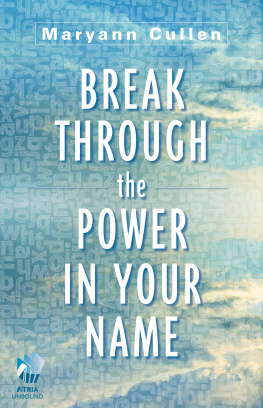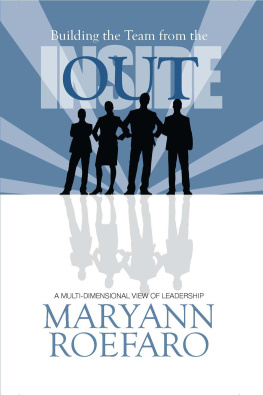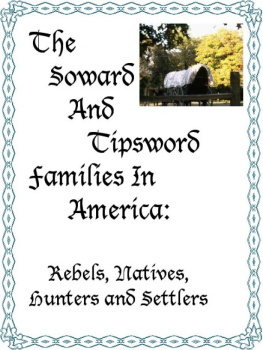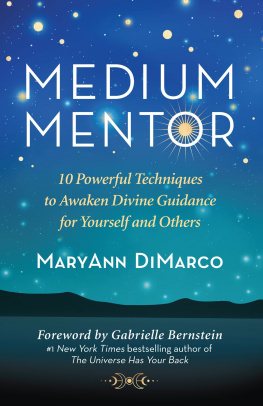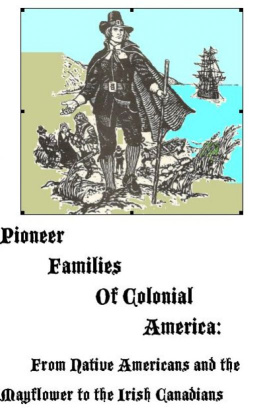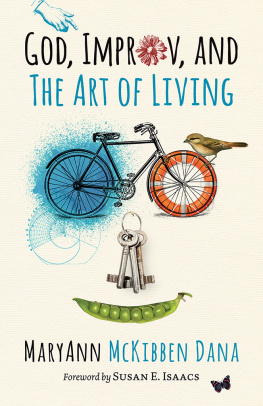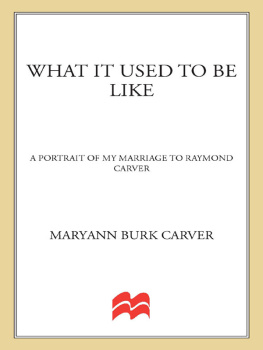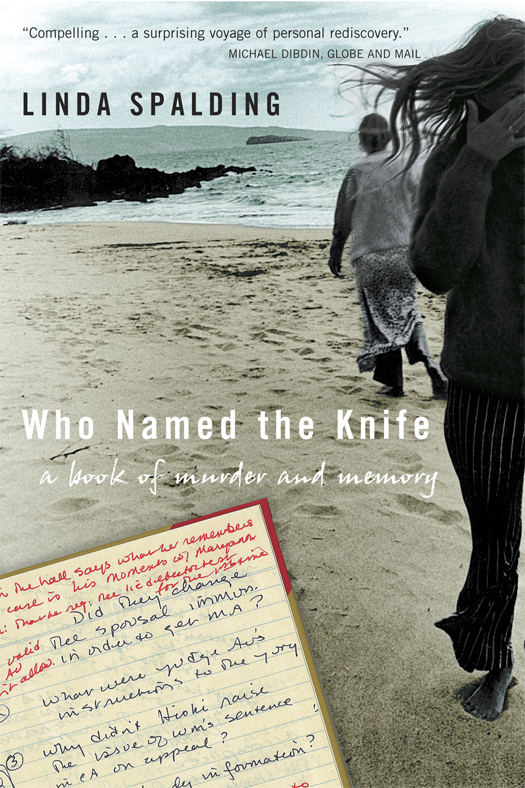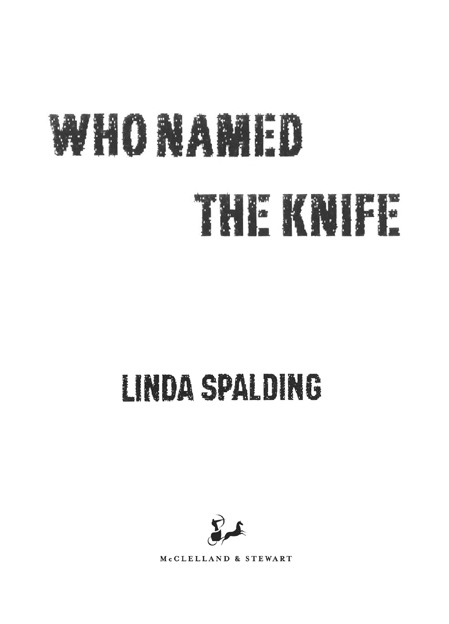A BOOK OF MURDER AND MEMORY
Copyright 2006 by Linda Spalding
Hardcover edition published 2006
Trade paperback edition published 2007
All rights reserved. The use of any part of this publication reproduced, transmitted in any form or by any means, electronic, mechanical, photocopying, recording, or otherwise, or stored in a retrieval system, without the prior written consent of the publisher or, in case of photocopying or other reprographic copying, a licence from the Canadian Copyright Licensing Agency is an infringement of the copyright law.
Library and Archives Canada Cataloguing in Publication
Spalding, Linda
Who named the knife / Linda Spalding.
eISBN: 978-1-55199-727-8
1. Acker, Maryann. 2. Spalding, Linda. 3. MurderHawaii. 4. MurderersHawaiiBiography. 5. Authors, Canadian (English)20th centuryBiography. I. Title. II. Title: Who named the knife: A book of murder and memory.
HV 6533. H 39 S 62 2005 364.152309969 C 2005-903392-4
We acknowledge the financial support of the Government of Canada through the Book Publishing Industry Development Program and that of the Government of Ontario through the Ontario Media Development Corporations Ontario Book Initiative. We further acknowledge the support of the Canada Council for the Arts and the Ontario Arts Council for our publishing program.
McClelland & Stewart Ltd.
75 Sherbourne Street
Toronto, Ontario
M 5 A 2 P 9
www.mcclelland.com
v3.1
For Michael
Contents
Justice had been done, and I belonged to the nation of criminals
Peter Handke, Across (1986)
The first time I visited Hawaii it was still a territory, not yet the fiftieth American state, and to my vivid fourteen-year-old Kansas imagination, it was another world. I was visiting my brother and his wife in the summer of 1958. Hed been born ten years before me and by the time I could measure anything, hed left home. He would not be a lawyer like our father. He would not wear a suit or drink highballs or join the navy. He saw that I was unhappy (we both knew the brooding temper in the Kansas house) and he took me out to Hanauma Bay, where he taught me courage by telling me to relax, to breathe, to go with the waves. Once, we were swimming over the coral looking down through our masks when I saw something in a crevasse where the water was not even very deep. It was a moray eel with a cold, blank look over an open throat and murderous teeth.
When I married, I moved with my husband to Hawaii. To the way, as my mother put it, I thought life should be. Of course it was changed. The landscape was different. There was no room for taro, the mainstay of the Hawaiian diet, or for the stone heiau dedicated to Hawaiian gods. The past had disappeared, as it always does, but there were temple stones scattered in the grass. I tried to belong.
When my husband and I divorced, I stayed in Hawaii and raised our two girls. Then there was a murder and a trial. The yellow notebook I kept.
Years later, to find that yellow book containing my notes, the mistake I had made. I had changed countries, changed lives. And I had left the past unfinished.
1
Murder. In such a place.
From above, from the highway, it looks like a planet must have fallen into it, the round bowl edges of this bay are so perfect. Below the surface of the water, amazing fish can be seen living their lives in the coral. This is a place where children play in the waves, where parents sit on the sand, where people float, looking down. A swimmer can pause, roll over, blink a few times, and look up at the hills that surround this blue water. The hills feel protective, a barrier between the world of invention and this place.
So it must have looked to Larry Hasker in the last minutes of his life. He had been casual with his captors. So this is a robbery? I cant believe it. He got out of the car with his shirt unbuttoned, his rubber slippers moving over the rocks. Up at the cusp, above the parking lot, the terrain is rough. Even through the slippers, he must have felt the jolts of stone and brush and dirt. He had smoked a joint in the car. He was young, twenty years old, and almost relaxed. On a ridge within sight of the highway, he turned and looked down. It was past midnight in the month of June, 1978. The moon was high. It threw its reflected light on the ocean so that the water looked like metal heated over flame. Molten. He breathed in and reached down for himself, opened his fly. Looking at water and night. The stars were there too. And his captors.
There is no shame in dying with a shirt open or pants, dying in the act of emptying oneself. In such a place.
The girl who discovered the body was taking a walk before work, noticing the dusty smell of kiawe above the bay, the pungent smell of seaweed, the smell of a place where ocean and land meet. It was early in the morning, but when she saw a slipper lying in the brush, she was not surprised. Near any beach, such a forgotten slipper is not unusual, although this one wasnt broken; its thong was intact. She saw the slipper and then she saw a human foot covered in flies. It was a Monday morning and nobody was there to hear, but she screamed.
So it begins with a body on the side of the road that leads from Hanauma Bay to the Kalanianaole Highway on the windward side of Oahu this story of murder, on the island where I lived. The body was lying twenty-five feet from that highway among rocks, thorns, and brush. The shirt was untorn. There were no scratches, no bruises, no cuts on the flesh. There were just two wounds: one on the right side of his head and one on the outside surface of a leg.
What happens in such a place, on such a beach, is quickly forgotten in any season. What happens can so easily wash away. Even above the tide line, far above it, a third bullet can get lodged in the sand, can be plucked at by birds, can be sent down the slope by a vagrant wind. A body can be ignored until it is past recognition, until its bones and teeth must be studied; it can be eaten; it can merge with the elements; it can be nosed at by wandering dogs. But this is a beach for children and families, a place to be walked along and sat upon. And what is there left of Larry Hasker here? Blood. Piss. A fragment of rubber slipper. Hed stood in the brush above the sea with its luminous sheen. One of his slippers had fallen off. Hed turned, unzipped and zipped. Then hed been shot.
Once in an ankle. Once in the head.
Someone, it must have been, with lousy aim.
2
In 1978 I was a white, Midwestern American living on the windward side of Oahu with my two daughters. I was a single mother then, running a child-care agency for low-income families, and I must have read about the murder of Larry Hasker in the morning paper. Another syndicate killing, I must have thought.
In those days, the morning paper was stuffed in my mailbox before I got up. I had to walk across the front yard in whatever I had worn to bed and step on the sleeping grass, which stung my feet. Id have made myself a pot of coffee and given myself until ten oclock to get to work because it was summer and I was my own boss. Id have sat outside under the tin roof of the first house Id ever owned a house hard won and loved by me as no other. Id have sat on one of the two basket chairs and read about the murder and Id have thought about my father because it was a reflex. He had been dead for six years at the time of the murder, but Id have thought about him and about my brother, who had taken me out to Hanauma Bay. Neither of us had ever seen our father in court, but all my life I had imagined him there.


